How accurate are yours? James Park looks into an important aspect of bow setup
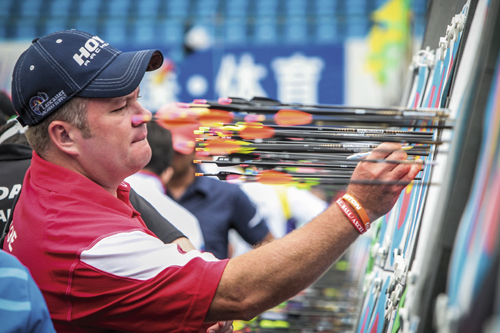
The study of target faces from Shanghai and Antalya found compound archers gave away fewer points from a mis-set sight than recurve archers
Some readers might be aware that I have had a long-term interest in accurate sight settings. Back in the late 1970s I worked out the mathematics for sight settings. To do it accurately you need to take account of the geometry of the bow and sight, and allow for the aerodynamic drag of the arrow. However, in the 1970s it was a bit inconvenient to have to use batch processing of my computer program on a mainframe computer in order to get my settings.
With personal computers becoming widely available, I wrote the first version of my sight setting program “Accurate Sights” back in the late 1990s. “Accurate Sights” is now widely used: the vast majority of archers in Australia use it, as well as many archers in other parts of the world. There are a number of other programs available as well, and I firmly believe that archers will score more if they use one. (My program is available from Pats Archery in Australia: www.pats-archery.com.)
Having that interest in how accurately archers set their sights, I decided to run a test. With the kind agreement of World Archery and the event officials, my colleague Jim Larven and I photographed every target face at World Cup Stage One, 2013, held in Shanghai, after the 50-metre distance for both recurve and compound archers. We also photographed those for the recurve archers after the 30-metre distance. I repeated the process at the 2013 World Archery Championships, held in Antalya. Usefully, at both the 50-metre and 30-metre distances all archers used an individual target face.
That gave us about 30,000 arrow holes to analyse. For each target face we digitised the arrow holes and checked the digitised scores against those actually obtained by the archers. (That was a very large amount of work indeed!) Some of that processing we automated, but a large amount was undertaken manually.
For each archer we calculated the position of the centre of the group and the group shape. We were then able to move the group on the target digitally to see if the archer could have scored more by using a different sight setting. That was able to tell us how many points the archer ‘gave away’ by not paying sufficient attention to the group position. However, this process does under-estimate the potential score lost as we were not able to account for the archer making sight setting changes during the distance. In reality, the archers would have given away more points than our calculation showed.
The results were quite interesting. On average, each archer gave away about three points for every 36 arrows due to incorrect sight settings. For the recurve archers shooting a 144-arrow round, that is an average of 12 points for the round. For the compound archers it is about six points for the round as they shot a 72-arrow ranking round. On average, one place in the ranking round was worth about 1.2 points for the recurve archers and about 0.6 points for the compound archers.
While the average point loss for 36 arrows was three points, some archers gave away many more. The greatest loss was 23 points for just one distance, and there were quite a few examples of archers giving away 10 points. And remember, these were the best archers in the world!
The women archers, both recurve and compound, gave away more points than the men. The score loss was not confined to just the archers of lesser capability – even some of the most capable archers did not have their groups well centred and gave away a lot of points. By far the best were the top compound men – by and large their groups were very well centred and optimally placed for best score. Looking at the groups after the distance was completed, it is blatantly obvious that some of the archers did not have their groups centred, but somehow or other they seemed either to have not noticed while they were shooting or, if they did notice, then did nothing about it.
Interestingly, following the World Cup event I pointed out to the Australian recurve archers that they had given away 18 points at 50 metres between six archers due to incorrect sight settings, and I showed them a few simple strategies for trying to keep their groups centred. At the World Archery Championships the six Australian recurve archers gave away only three points between them (all from just one archer), which was a really nice improvement.
We have published the results and you can find the paper in the Proceedings of the Institute of Mechanical Engineers, Part P: the Journal of Sports Engineering and Technology, http://pip.sagepub.com/. Look under papers by JL Park.
In summary, most archers (and even the very best archers) could score more simply by taking more care to set their sights correctly.


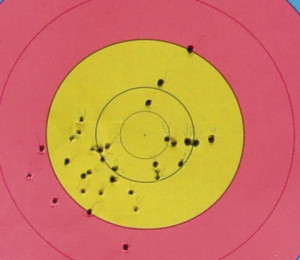
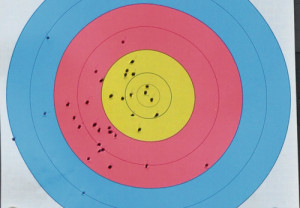
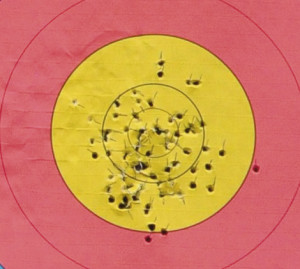
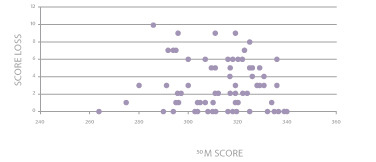
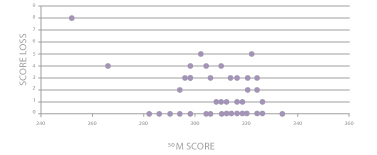
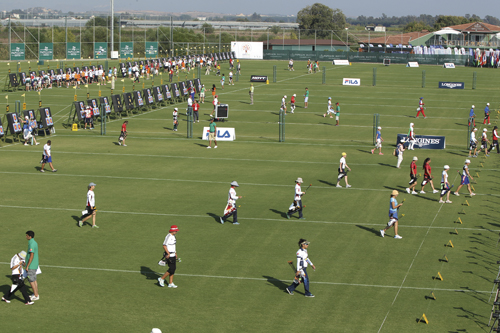
Due respect for the time and effort that no doubt was invested in this research, but hardly an archery epiphany – you could score more if your sights are correctly adjusted. Really?
@Mathew String you’ve missed the point, which is that the level of error can be quantified, and therefore any level of improvement can also be quantified.
Was that the point? If so, yes I missed it. I thought the conclusion (point) was; “archers… could score more simply by taking more care to set their sights correctly”. I agree with the finding but my point is that it’s sufficiently self evident that as a scholarly article this publication is effectively redundant. Others will see value, and that’s ok.
Mathew,
Yes it is of course obvious that you will score more if you set you sight correctly.
The point of the article is that even at the highest levels of competition it seems that most archers do not take sufficient care to ensure that their groups are centred on the target face. At less than 1 point per ranking place in those competitions it is quite a damaging omission.
Hi, this is very scholarly and interesting, but it is not clear from James what practical steps can be taken to correct the centring, or what it was that the archers didn’t do resulting in poor centring during a competition. Did they for example learn to better analyse patterns using their scopes? Did they map their arrow hit patterns on a target image as they went along? I think the practical solution is key here and yet seems to be absent.
I was thinking about this this morning. . Thank you for such a detailed article 😉
Hi,
I am from Malaysia. It is a very good correlation. I often have trouble coaching kids about sight adjustments. And try-outs at the field is so time consuming especially for 70 meters. Poundage used for 70 meters are merely 36 pounds. I appreciate if you could share the software with me for a kind of guide. We are just a small club and we could not afford to buy it from the disclosed website. All I can offer is my generous hospitality if you visit Malaysia.
Thanks
Mikhail
Hi I am new to archery and acquired my 1st recurve and joining my local club but a little unsure of how to set a standard setting for the sight set up to begin with as when I acquired it there was no advice as such of what I should start my marker at.
Many thanks
Hi Russell. There is no ‘standard setting’ unfortunately, because everybody’s bow and arrows and size and weight are slightly different. For example, at 18m indoors, I have a standard Shibuya sight set to around the number ‘2’ mark at the top of the scale. At 70m, it might be around ‘8’, but that’s for my bow weight and my arrow length. The only way is to estimate (look at other archer’s sights at your club) and then try for yourself – shorter distance first. Make sure to record it: I like to do so in a notebook and with annotated pics on my phone. Good luck!